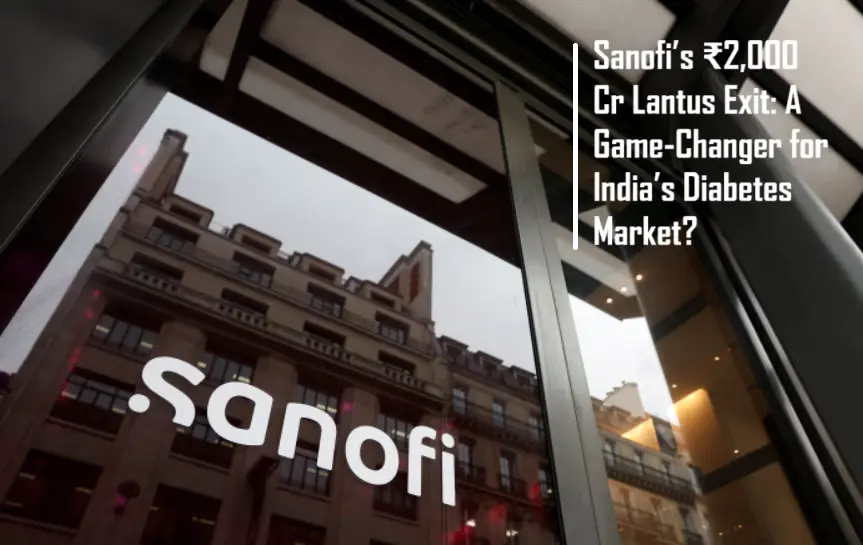
Sanofi Rs 2000 Cr Lantus Exit Could be a Game Changer for India Diabetes Market
Sanofi is selling its iconic insulin brand Lantus for ₹2,000 Cr. Domestic giants like Glenmark and Dr. Reddy's are eyeing it, reshaping India’s diabetes care space.
In a bold and unexpected move, global pharma giant Sanofi has officially put its legendary insulin brand Lantus on the market, slashing its earlier valuation from ₹3,000 crore to ₹2,000 crore. This decision has sent ripples through India’s pharmaceutical industry and could redefine the future of diabetes care in the country.
At the heart of this shakeup lies a trusted name — Lantus, once the gold standard for long-acting insulin therapy. Introduced to the Indian market with strong global backing, Lantus rapidly gained credibility among doctors and patients alike. But today, sales have dipped from ₹588 crore in 2022 to an estimated ₹426 crore in 2025, signaling not just a brand decline but a shift in how India manages chronic conditions like diabetes.
The Big Players Eyeing the Deal
This isn’t just a business story — it’s a battle for relevance, reach, and patient trust. Indian pharma majors such as Glenmark, Dr. Reddy’s, and Emcure are reportedly in the race to acquire Lantus. For them, it’s not just about a product — it’s about taking control of a legacy and leveraging it to dominate the rapidly evolving insulin glargine market, currently valued at ₹798 crore.
An acquisition like this would instantly elevate the buyer’s standing in a ₹4,507 crore insulin market, where leading players like:
Mixtard (₹776 Cr)
Ecosulin (₹597 Cr)
Novomix (₹375 Cr)
Actrapid (₹220 Cr)
already compete fiercely for mindshare and market share.
Why Is Sanofi Selling?
While Sanofi’s decision to exit such an iconic brand may seem surprising, it reflects a larger reality — the market is changing fast. Newer, more advanced long-acting insulins are gaining ground, and doctors are switching prescriptions based on better efficacy, cost considerations, and evolving patient needs. For Sanofi, divesting Lantus could free up capital to double down on newer, more innovative therapies where margins and growth potential remain high.
What This Means for Patients
For millions of Indians managing diabetes daily, this deal isn’t just about pharmaceutical M&A — it could directly impact their access to trusted insulin. A domestic takeover may improve affordability, enhance supply chain distribution, and foster innovation tailored to Indian needs. However, there are concerns too: Will the new owners preserve quality? Will prices remain stable?
Strategic Insight
This rare opportunity — a multinational stepping away from a blockbuster brand — is a moment of reckoning for Indian pharma. Those who can move quickly, invest wisely, and rebuild Lantus’ legacy with renewed relevance will have a once-in-a-decade head start in chronic care leadership.
Industry watchers say this move also signals increased pressure on global brands to either innovate or exit in India’s hyper-competitive pharma ecosystem.
As India braces for a diabetic population surge, crossing 100 million by 2045, the Lantus acquisition could shape how the next generation manages this chronic condition. One thing’s clear — this isn’t just a sale; it’s a strategic shift in who gets to define the future of diabetes care in India.
???? Sources:
VCCircle (2025) – Deal insights
AIOCD AWACS data – Insulin market statistics
Industry commentary on insulin glargine and chronic care strategies